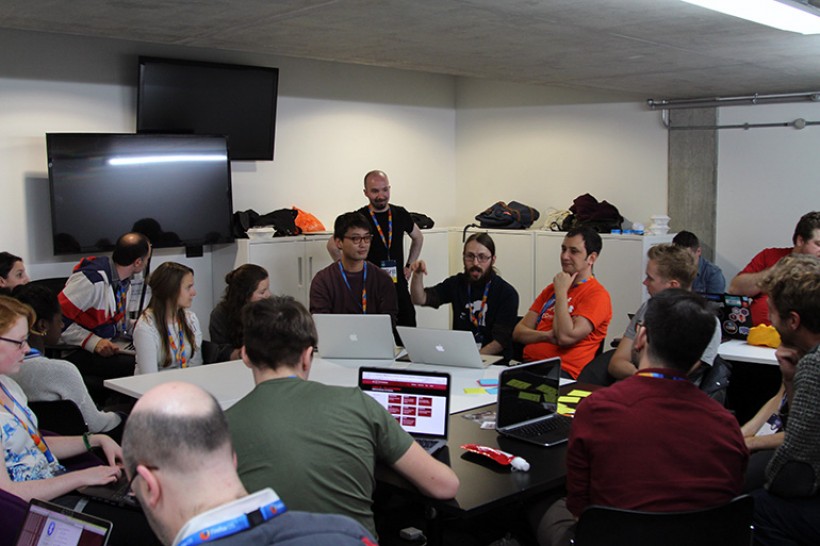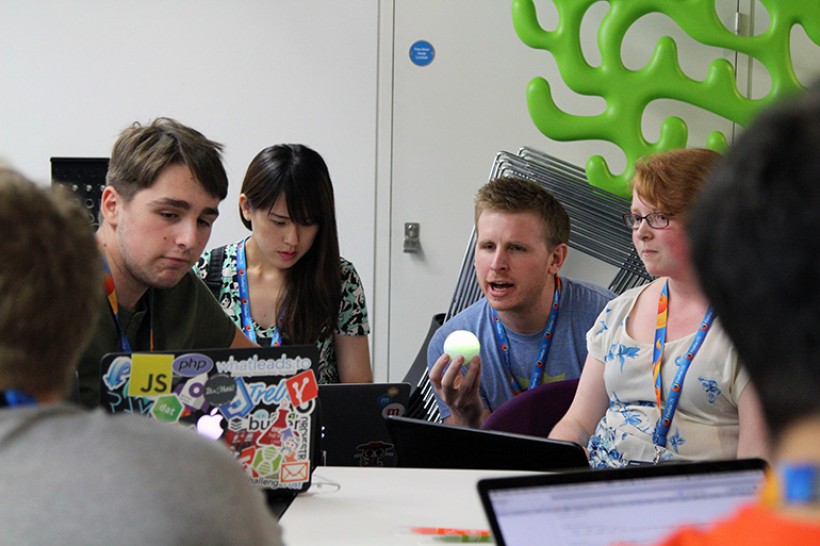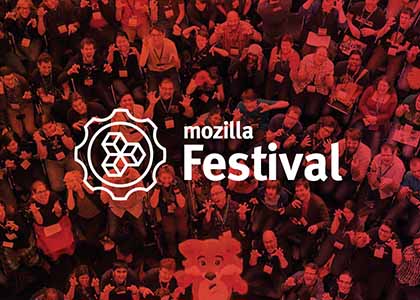MozFest is an annual festival held by the Mozilla Foundation to promote collaboration and an open, global web. 2014 was Cyber-Duck’s fifth year participating and we hosted two back-to-back workshops. Here's are the details of the workshop from my perspective.
Following the success of Cyber-Duck’s session at MozFest 2013, Gareth and I decided to develop a new workshop for 2014’s event.
We wanted to run a workshop centred on Javascript robotics for the Open Web of Things track using Sphero robotics balls. To tie in with the London Zoo’s MozFest activites, we focused on the animal theme and began to sketch our idea of using robots to mimic animals. By adding the possibility for the Spheros to communicate with each other through a “chatroom for robots”, we had all the pieces together for our final concept: Modelling animal behaviour with connected robots.

Participants sharing ideas at our MozFest 2015 workshop.
We were scheduled right after Andrew and Danny’s robotic personas workshop. Ours worked as an extension of their concept and a number of people attended both sessions.
We began by introducing participants to the brief and our tools. Everyone was familiarised with the ability to control the movements and colours of individual Sphero robots, as well as detect collisions. Using an online chatroom, each robot was able to get information regarding other robots and interact with one another.
After splitting into teams of four or five, each group began to brainstorm which animal interactions they wanted to model. During this first step, the attendees defined the animals involved and the behaviour of their corresponding robot (including its initial state, independent actions and interactions).

Gareth advises a group on the capabilities of the Sphero robots.
One group started with the idea of a lion and a group of zebras. The lion and the zebras would move randomly, with the lion detecting any close-distance zebra before moving in its direction. Any collision between the lion and a zebra would “kill” the zebra, represented by the zebra Sphero changing colour.
Another group decided to model a cobra charmer with multiple snakes moving together and receiving orders from the charmer. The charmer would have different colours for different songs and the snakes would “dance” accordingly. If the charmer would stop sending a song, the snakes would attack the charmer!
Once each group had come up with an idea, we helped everyone install and configured the required development tools. We then taught the groups how to implement JavaScript robotics using our example source code, which modelled a lion robot moving in random directions and a herd of gnu robots moving together in opposite directions from the lion.
At the end of the workshop we let our Sphero lions and Sphero gnus move autonomously and interact together in an area on the floor. It was great for all the participants to see a real demonstration after their brainstorming and development session.
Overall, everyone had a lot of fun during the workshop. Participants really enjoyed brainstorming animal interactions and programming their robots. The Internet of Things is steadily gaining popularity and people are getting used of connected objects interacting with humans or fetching information from the web. Our goal was to demonstrate that connected objects could also communicate with each other, and this opens the possibility to mimic real world behaviours and implement complex machine-to-machine interactions.
Cyber-Duck runs a number of fun and educational workshops for both small and large groups. Contact us for bookings or to learn more about how we can adapt these to your company or event.


